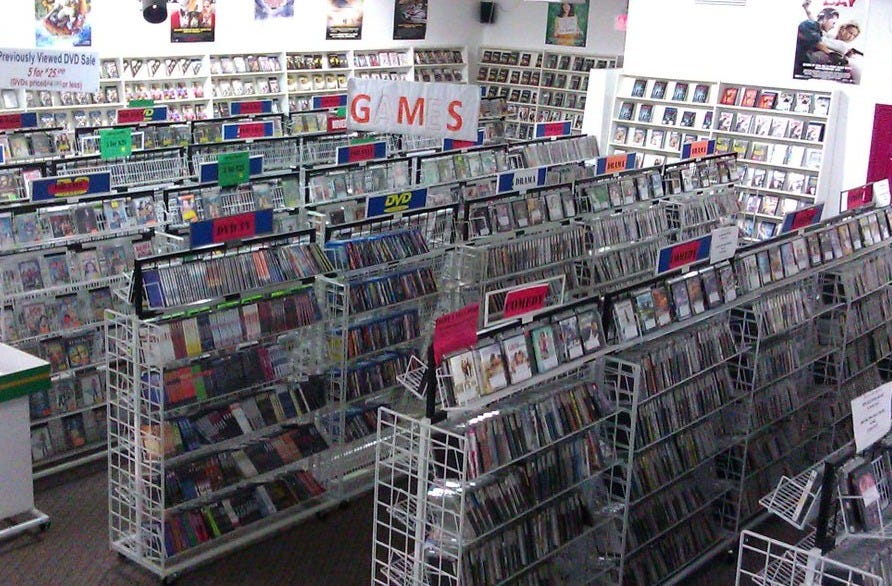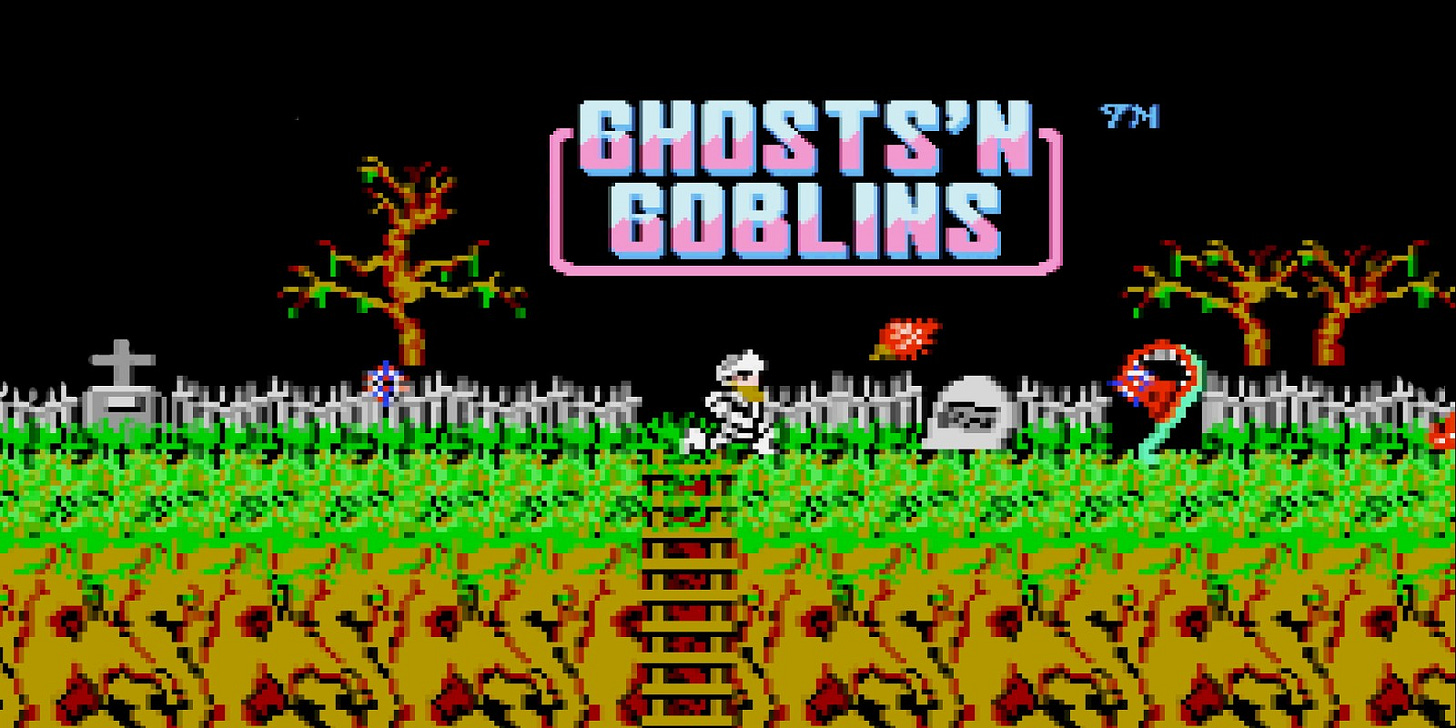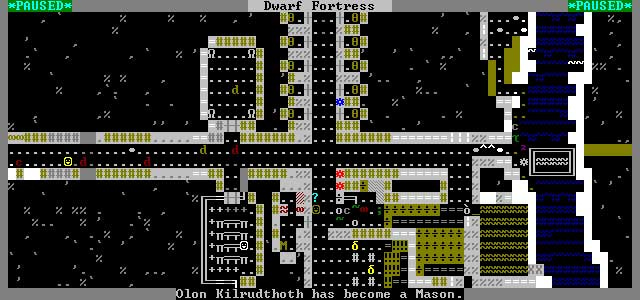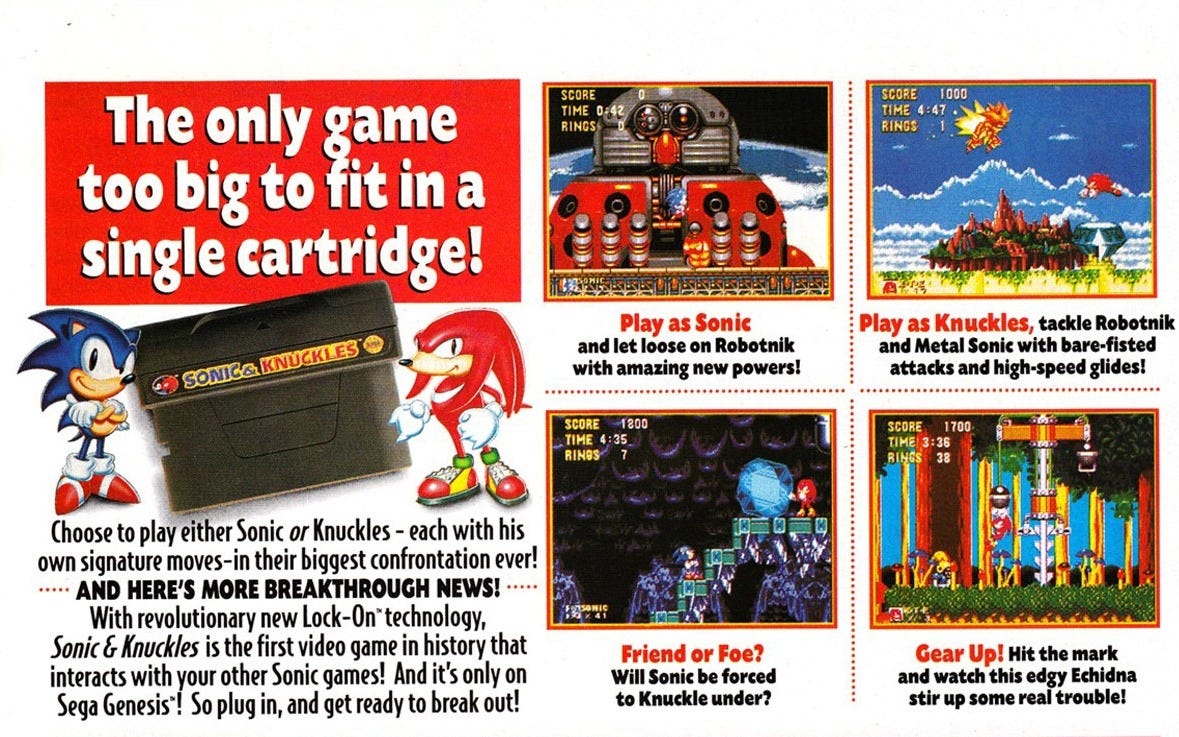
I am not, by temperament, inclined towards nostalgia. Most of the time, especially in gaming, I see nostalgia as a toxic impulse, and one often abused by marketing (and, increasingly, by fascist politics). I enjoy growth and embrace the changes that life brings.
But there is one aspect of gaming that I find myself increasingly nostalgic for, despite my better judgement, and that’s the era when every game was fairly short and self-contained.
In the ancient era before DLC and games-as-a-service, when a game was a concrete thing you bought in a box, a game was a finite thing. You played it, either to the end or until you were bored, and eventually you were done with it. Maybe you’d go back to a beloved game repeatedly because you enjoyed the pure gameplay or music or whatever, but for the most part, a game was a finite thing.
Of course, as with all nostalgia, part of this is naturally tied to my age at the time. Not in the normal “I wish life felt as vibrant again as it did when I had all those teen hormones coursing through my veins” way that nostalgia normally makes us feel about the formative art of our teen years — but rather, about the free time of my youth.
In the days of long summer vacations and few out-of-school commitments, it was easier to find time to play whatever games I could get my hands on. Our local video store had a huge wall of NES games to rent, and when homework wasn’t too heavy, I’d devour a new one every few days. Great games, terrible games, brutally unfair games, and weird little gems sprinkled throughout. It was like my own personal UFO 50, except closer to 150.

Back then, I had a lot of spare time, and games could be played and completed in a matter of hours. Now, for me and a lot of other people who grew up loving games, we have less free time than ever, and games take weeks to complete — if they ever end at all.
The Growth of the Forever Game
Now, in a lot of ways, this is a good thing!
For a lot of players, especially casual players who might only buy one or two games a year, there’s nothing wrong with having a game that’ll provide lots of playtime. After all, I was a designer for Skyrim, the poster-child for “spend a thousand hours just messing around” games.
And I’m always happy to find people who only have one or two games that they just adore and play for their entire lives — like the grandmother who just clicks with Tetris, or the storyteller who has enjoyed over a decade of the portable telenovella that is a good run of The Sims. I love when someone finds a game that speaks to them on that level.

But I’ve also seen parts of the industry grow to celebrate quantity over quality. Games compete on size, promising hundreds of hours of content, even if it’s increasingly samey — or worse, unlimited hours of competitive multiplayer, with a constant treadmill of battlepasses and expansions to not just get everyone to play their game, but to get spend all their time playing only their game, forever — and giving them money over all that time.
See, there’s an economy of scale to making games. You can broadly break down game costs into three broad categories:
The engine that runs the game: Usually a proprietary tool reused and updated between games (because using an existing one would mean giving a big chunk of your profits to another company!). This is expensive, but something you can split up over the course of multiple games, especially if they’re sequels. If it’s an online game, this includes the cost of game servers and everything else
The content in the game: all the art, animation, writing, design, and all the things you actually do in the game — including polishing all of the above. It makes up a huge part of your experience, and it gets expensive faster than making an engine. That’s why it’s increasingly outsourced, often skimped on, increasingly threatened by AI, and the first to get cut if the game doesn’t succeed.
Publishing and marketing: Now that publishers don’t have to spend any money making physical copies, you’d think this part would be cheap. But no, when a publisher decides to go in on advertising for something they think is a hit, the marketing budget can oftentimes be as much as the price of everything else involved in making a game, combined.
Of those three categories, content is the place where most games compete with each other, at least among most gamers. And creating more content is easier at large scale, especially for certain types of AAA games. Once you have a reliable engine, a plan, and a team in place for it, you can create 100 hours of samey content for a lower cost-per-hour than you can for 10 hours of unique content. So it becomes comparatively cheaper to create one 100-hour game than to create ten different 10-hour games.

And that cost-incentive works in almost all other aspects of game development cost, too. It’s not too hard to make an engine that supports a single sort of gameplay well enough to fill 100 hours of gameplay than it is to develop an engine that supports ten different sorts of gameplay. And it’s much easier and cheaper to market one 100-hour game than to market ten different 10-hour games. Hell, many publishers don’t want to have too many games coming out at once, just in case the marketing of one steps on the marketing for another.
Of course, there’s another way to promise nigh-infinite content: multiplayer. Build a robust enough competitive game, and you can rely on players to act as content for each other. But tackling that particular realm of forever-games is a larger issue for another article…
Too Big to Succeed
So there’s always been a financial incentive for publishers to push for games to become bigger and bigger. And obviously, as technology has improved, the potential to make games bigger and bigger has always been tempting. And when games are being sold based on quantity of content, then they all have to compete to be the biggest. They all have to spend more money on more content in order to pay for all that extra development cost — exponentially more, as gamers came to expect ever-higher fidelity graphics and cinematics and voice acting and the rest.

And as games get bigger, players can fit fewer and fewer of them into the limited times of their playing schedules. So you get a gaming landscape where you only have a few big hits every year that can sell enough copies to make up for their bloated cost.
In a hit-based industry like that, you can only have a few winners every year, and every studio gets closer and closer to being cut if their game doesn’t meet the bloated sales projections. Sure, DLC can help cover some of that budget — but that’s an issue so big that I’ll have to save for a separate article.
So what’s the solution to this constant bloat of a hits-based entertainment industry?
We know the answer because we’ve seen it before.
Less is More
Just like the movie industry learned (and relearned) after the bloat and collapse of various epic movie eras, the answer is to go indie. Every so often, it discovered that a new generation of filmmakers, using cheaper equipment, could not only bring smaller, more experimental work to audiences at lower cost — they also proved that a wider variety of content could bring a wider audience to the medium.
We’ve already seen a wave or two of this in the game industry, as well. The indie revolution of the ‘00s was a breath of fresh air for the industry, seeing new types of games, new voices in game development, and new audiences. It made use of increasingly available pre-made engines for development, and social media for marketing. And it kept content small, but personal and carefully crafted.
Of course, it was a travesty that the shittiest “fans” on the internet tried to destroy it, or at least some of the involved in it, but there are always regressives who backlash against any artistic growth.
But as the scope of the biggest games continues to grow, we’re beginning to see pushback again from another wave of indie developers. Mind you, it’s a difficult environment for them now, between less reliable funding sources and increased vitriol from a lot of the same regressives as last time.
But if games can indeed be a form of art, then you’ll see people making them not just in spite of the difficulties, but as a way to process those difficulties.
It doesn’t need to be a return to an era of nostalgia — although there are certainly indie games to cater to that impulse! — but it can be a return to a realm of sanity. And if it grows the audiences for games and proves that small games can be viable, then maybe it can help bring triple-A games back from the brink of their insane bloat.
We can hope, at least.




A related topic I would be interested to learn your POV on in a larger piece is how the expectation of co-op is changing game and especially narrative development. I see timelines inflated as developers need to optimize for net-code. I assume that the co-op experience also dilutes linear narrative experiences—assume because I've never attempted to play a game in co-op (lonely gamer). But I look back on my experience on Subnautica and wonder if I can expect similar in the co-op sequel.
Totally agree that differentiated, indie games can help break the spell of the forever games. AI is a double-edged sword, but I'm hopeful that vibe coding can unlock a new generation of indie developers.
(That is, of course, until better AI swallows up all games into hyper-personalized, forever games.)